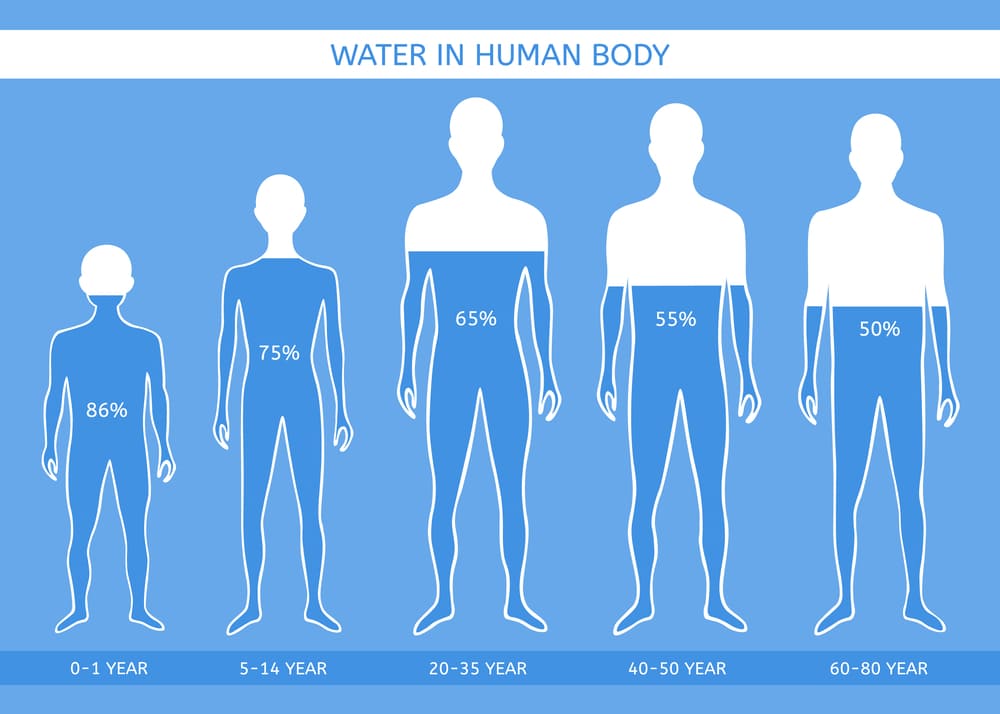Transepidermal Water Loss (TWL or TEWL)
Table of Contents
Transepidermal water loss (TWL or TEWL) is defined as the measurement of the quantity of water that passes from inside a body (animal or plant) through the epidermal layer (skin) to the surrounding atmosphere via diffusion and evaporation processes. TWEL in mammals is also known as “insensible water loss” as it is a process over which organisms have little physiological control.
TWEL is of major concern in public health, considering the relatively high rate of burn incidence among communities in the developing world due to poor quality cooking stoves. Resources for burn care in local clinics are often scarce and depending on the affected surface area, TWL is a major issue that can be overlooked. Furthermore, TWEL is also affected by variations in sweat gland activity, temperature, and metabolism. Therefore, TWEL becomes a significant factor in dehydration associated with several major disease states.
Measurements of TWEL may be useful for identifying skin damage caused by certain chemicals, physical insult (such as “tape stripping”), or pathological conditions such as eczema, as rates of TWEL increase in proportion to the level of damage. However, TWEL is also affected by environmental factors such as humidity, temperature, the time of year (season variation), and the moisture content of the skin (hydration level). Therefore, care must be taken when interpreting the meaning of TWEL rates. From a clinical view, TWEL measurements are of great importance in evaluating skin barrier functionality. Often normal rates of TWEL are compromised due to injury, infection, and/or severe damage as in the case of burns. Damage to the stratum corneum and superficial skin layers not only results in physical vulnerability but also results in an excess rate of water loss. Therefore, dehydration, metabolic acidosis, and conditions such as anhydremia or concentration of the blood are often critical issues for healthcare providers to consider in the treatment of burn patients. Disruptions to the skin’s barrier system including cuts, scratches, burns, and even dry skin, can increase TEWL. It is also affected by external factors including temperature, humidity, and UV light. Factors that damage or insult skin, increase water loss and leave skin feeling dry. Because dry skin looks and feels unhealthy, it’s important to try and minimize transepidermal water loss in the following ways:
- Protect skin from external factors including wind, sun, extreme temperatures. A good sunscreen is a must to protect against the damaging effects of UV rays.
- Use humidifiers in dry climates.
- Mild cleansers help to maintain the skin’s natural barrier system.
- Moisturizers that contain humectants (water-attracting ingredients) and occlusives (create a barrier against external factors) can help to minimize water loss.
When an occlusive cover is applied to the skin, the TEWL is inhibited and the skin moisturizes. Upon the removal of the occlusion the water, which accumulated in the skin porosity during the occlusion, evaporates and diffuses outside showing a TEWL rate larger than the basal value, and function of time. The release of excess water that accumulates in the skin following an occlusion is a fast transient phenomenon, which has a characteristic time of the order of minutes (the initial decay is very rapid indeed, in less than a minute the TEWL value may decrease by more than 50%). On the other hand, the characteristic measuring time of the evaporimeter may be as large as 30 s. Therefore, the use of the evaporimeter for measuring the initial values of TEWL upon immediate removal of the occlusion is not reliable. When a transient phenomenon cannot be fully described by a measuring device that has an initial characteristic response time of the order of the characteristic time of the phenomenon, a mathematical model, which describes the dynamics of the phenomenon, must be developed. Then the measurements taken after the measuring device is stabilized may be extrapolated to the initial times by the use of the model, thus allowing a full quantitative description of the phenomenon vs. time. Finally, the experimental results show that a baby’s disposable diaper, when loaded with water, behaves like an impermeable occlusive cover on the skin.
Transepidermal water loss (TEWL) and water content of the stratum corneum, when measured simultaneously, provide important information regarding skin function. Based on the model presented, it is possible to differentiate dry senile skin from dry pathological skin (such as psoriasis, atopic dermatitis, irritant reaction), clinically involved or uninvolved. Pathological dry skin, because of the impaired barrier function is associated with increased TEWL and low corneum water content. Senile skin, on the other hand, shows both, decreased TEWL and stratum corneum water content. It is suggested that with this model it may be possible to differentiate uninvolved pathologic conditions from healthy skin. The instrument used to measure TWEL is described in the preceding text.
The Device
It is a device for the assessment of the TWEL which is an indispensable parameter for the evaluation of the water barrier function of the skin and a basic measurement in all kinds of applications. Even the slightest damage in the skin water barrier can be determined at an early stage (Fig.1).
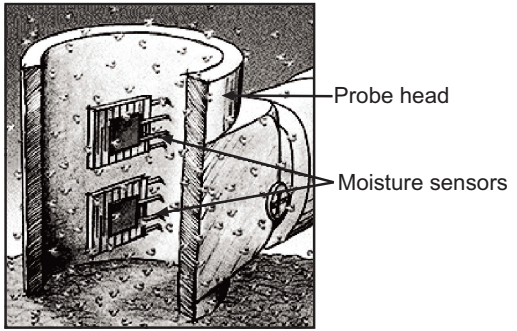
Measuring Principle
Certain evaporation of water from the skin takes always place as part of the normal skin metabolism. As soon as the barrier function of the skin, however, is slightly damaged, the water loss will increase (even with the smallest damages invisible to the human eye). Therefore this measurement is a basis for all cosmetic and dermatological research. The Tewameter probe measures the density gradient of the water evaporation from the skin indirectly by the two pairs of sensors (temperature and relative humidity) inside the hollow cylinder. This is an open chamber measurement. The open chamber measurement method is the only method to assess the TEWL continuously without influencing its micro-environment. A microprocessor analyses the values and expresses the evaporation rate in g/h/m2.
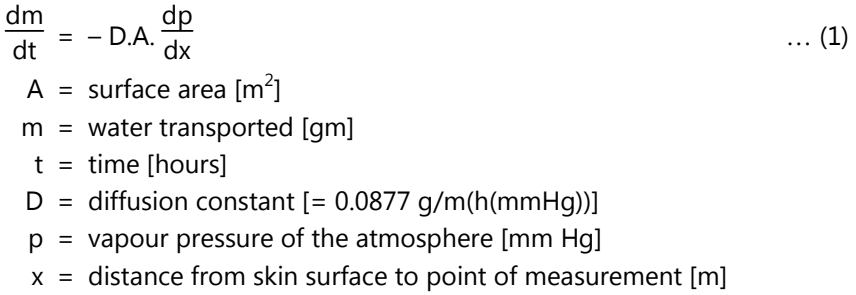
Advantages of Tewameter
- Extremely accurate and quick measurement of the TEWL without any influence of the micro-climate of the skin (pressure, occlusion, temperature).
- The small size of the probe head minimizes the influence of air turbulence inside the probe.
- Its low weight does not influence the skin structure and ensures easy handling.
- No waiting time between the measurements.
- Traceable, sophisticated calibration of humidity, temperature, and TEWL to g/h/m2.
- A stable measurement is achieved quickly; continuous measurements over longer periods are also possible depending on the application.
- The development of the measurement values as average and standard deviation over time is always visible. Display of RH and °C separately for upper and lower sensors.
- Recording of the ambient conditions with the Ambient Condition Sensor RHT 100 to help to compare measurements taken at different times.
- Special calculations i.e. SSWL (Skin Surface Water Loss – assessment of skin’s water holding capacity after occlusion) are possible.
- With the open chamber measurement even higher water loss values can be detected accurately as no water is collected inside the probe.
- The accuracy of the probe can be checked anytime quickly.
- The offset function to compensate “ageing effects” of the probe is possible.
- Measurement with several probes at the same time possible (e.g. for the measurement of large areas or sweat studies).
- Accessories for measurements on small skin areas, special adapters to be hygienically cleaned, etc. are available.
Applications of Tewameter
The measurement of the TEWL and the quality of the barrier function of the skin is the basic measurement for all cosmetic applications.
- An indispensable instrument for the formulation, claims support, and efficacy testing of skincare, household product, raw materials, and pharmaceutical products.
- Scalp, lip, and hair measurements.
- Sweat studies (antiperspirant efficacy).
- It can be used in in vitro testing of skin permeability and dermal absorption necessary for safety and efficacy testing. For this application, even a special probe, the In-vitro Tewameter® VT 310 has been developed.
- It is used for dermatological basic research.
- In occupational health, it is used to show the quality of the barrier function of the skin and the importance of using skin protection products.
- Veterinary dermatology and zoology.
- The measurement is also used in related industries such as textile or food or paper/tissue industry.
The Probe Heater PR 100
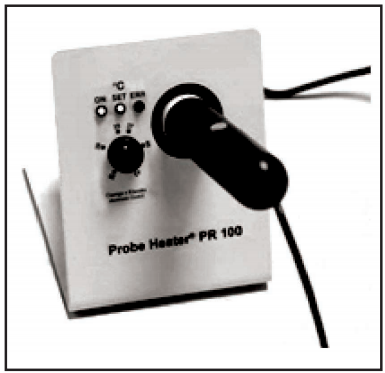
The sensors of the probe normally have room temperature (20-22°C), whereas skin temperature is 30°C and higher. As the amount of evaporating water measured with the device is extremely small (healthy skin 8-15 g/h/m² → 0.000001333 – 0.00000025 g/min/cm²), the sensors inside the probe should reach skin temperature to measure this small amount exactly and stable. With the probe heater, the probe head is constantly warmed up to a temperature close to skin temperature and thus getting very quickly accurate and stable results.
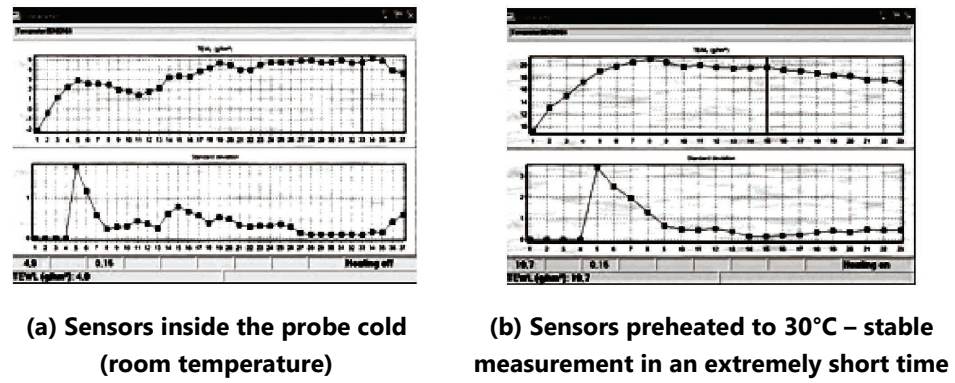
Applications of In-vitro TEWL measurements
- Inexpensive pre-screening before in vivo tests (no ethic commission, no expensive volunteers).
- The only way to study skin permeability and dermal absorption necessary for safety and efficacy testing.
- In vitro tests are established in several worldwide acknowledged guidelines: WHO (World Health Organization), SCCS (Scientific Committee on Consumer Safety), and OECD (Organization for Economic Cooperation and Development.
Make sure you also check our other amazing Article on : Moisture Meter
